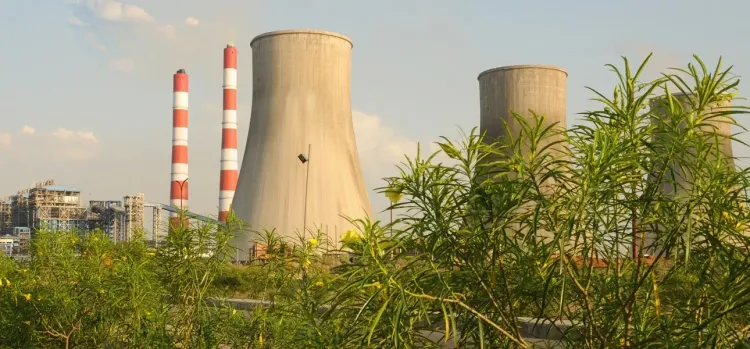How Will the FGD Implementation Waiver Aid Coal Plants in Saving Up to Rs 24,000 Crore Annually?

Synopsis
Key Takeaways
- The Centre has relaxed FGD installation requirements for many coal plants.
- This move could save coal plants between Rs 19,000 crore and Rs 24,000 crore annually.
- Category C plants, exempted from FGD, represent 80% of the capacity awaiting implementation.
- Coal-based power generation remains essential, accounting for 75% of total generation in FY2025.
- The overall energy consumption is projected to rise significantly by FY2030.
New Delhi, July 18 (NationPress) The recent decision by the Centre to ease the mandatory installation of flue gas desulphurisation (FGD) systems at a majority of coal-based thermal power plants is set to enable significant savings of Rs 19,000 crore to Rs 24,000 crore in annual tariff costs, translating to Rs 0.17 per unit to Rs 0.22 per unit in tariff reduction, as highlighted in a report released on Friday.
The positive implications of this FGD exemption for Category C plants, which possess a combined capacity of 145 GW, are particularly beneficial for thermal independent power producers (IPPs). With a capital expenditure estimated at Rs 0.6-0.8 crore per MW, the overall reduction in capex may range from Rs 87,000 crore to Rs 1,16,000 crore, according to findings by CareEdge Ratings.
According to Sabyasachi Majumdar, Senior Director at CareEdge Ratings, “The exemption of Category C projects from FGD implementation is advantageous for thermal power producers, given that these projects account for 80 percent of the capacity still awaiting FGD installation. This will alleviate the pressure of an impending tariff increase to cover the FGD capital expenses.”
Last week, the Ministry of Environment, Forest and Climate Change announced this relaxation, paving the way for differentiated compliance based on the proximity to urban areas and the sulphur content present in the coal used.
The newly established framework, which resulted from extensive discussions and various independent analyses, will limit the FGD requirements solely to plants situated within 10 kilometers of cities with populations exceeding one million.
Despite representing only 47 percent of the total installed capacity, coal-based power generation remains a crucial component of India's energy sector, contributing approximately 75 percent of the total generation in FY2025.
This dominance is largely due to the higher Plant Load Factor (PLF) of coal-based power plants when compared to renewable and hydroelectric sources.
According to the report, while there is an anticipated shift towards renewable capacity additions and a slowdown in coal-based capacity growth, the proportion of coal-based plants in overall generation is projected to remain substantial, around 60 percent by FY2030.
Additionally, considering the expected rise in overall energy consumption, the total demand for thermal power is expected to remain robust, reaching approximately 1,233 billion units by FY2030, as per the projections.
The recent amendment from the Ministry, which spares Category C plants from the FGD requirement, not only alleviates the financial pressures on thermal power producers but also maintains environmental considerations by retaining FGD mandates for Category A and B projects, according to Shailendra Singh Baghel, Associate Director of CareEdge Ratings.










